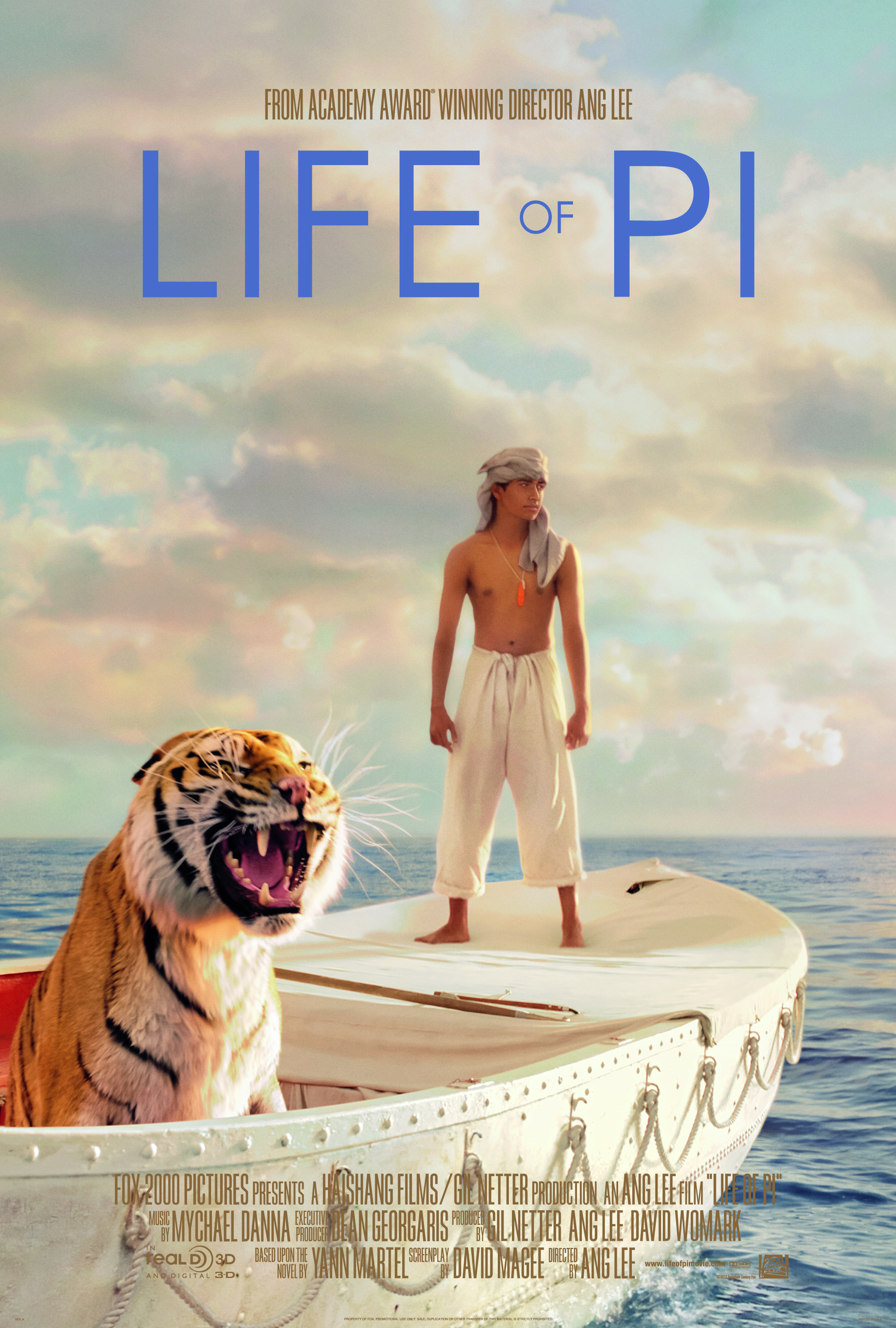Based on the bestselling novel by Yann Martel, “Life of Pi” is the story of a man named Pi Patel (Irrfan Khan) telling his life story to an inquisitive writer (Rafe Spall). Growing up in India with a family who owns a zoo, young Pi (Suraj Sharma) survives a shipwreck at sea by getting on a lifeboat. Little does he know that his fellow survivor is a ferocious tiger. For countless months, Pi is lost in the middle of the Pacific Ocean with limited resources and mixed beliefs that a god or gods exist and are watching over him.
Film is tense and philosophical
Those who have not read the book would think this would be a boring storyline of a movie but don’t ever judge a book by its cover. Just in the trailer itself, you see that it is full of adventure and challenges. Being stuck on a lifeboat with a wild animal is dangerous and it draws the audience in to see how the conflict will resolve between them as they begin to rely on each other to survive out in the ocean. Numerous encounters and events take place just on the lifeboat itself which shows how much a movie can portray in one location.
Especially in the beginning of the film, it is interesting to see how Pi views faith and belief. Various religions are discussed, shown, and practiced in this movie — Catholicism, Hinduism, and Islam. Pi’s father, a science follower, even tells him that religion is “darkness.” Although there are scenes where he begins call out to God, his view on where his faith stands as a grown adult is still somewhat surrounded by all three religions. His beliefs in any of the three are not thoroughly grounded as much as centered around each of them. With that, you can get a sense of his curiosity and belief that there is a god out there watching over him.
Breadth of human emotion portrayed
This movie spans a myriad of human emotions — happiness, anger, curiosity, and more. The emotions are portrayed throughout the entire film, not just specific scenes. Even when Pi is a grown adult telling his story to the writer, you see that it is difficult for him to find the right words to explain some of his painful experiences as tears run down his cheek. But even some of those tears were expressed out of happiness from Pi knowing that he survived with the ability and strength to overcome his fears and to hold on to hope even in his darkest hours.
As Pi gets into telling his life story in more detail, you notice that the writer does not take notes or voice-record the conversation but just simply listens because he becomes engaged with the remarkable survival, the numerous encounters, and the overcoming of fear that Pi had faced. It does the same to the audience as well. The more the story progresses, the more engaged and curious you become. The focus moves from a life story to something like a classic tale that is told by a grandfather to his grandchildren.
Actors are unknowns but their performances are excellent
A major factor that stood out in this movie is that most of the actors are unrecognizable from other films. In fact, having a role in a major motion picture was new to them. There are no well-known actors or actresses in this film which makes it interesting to see what new actors can do. The cast was well thought out and each contributed to how the characters in the book were portrayed on the big screen.
Although it is rated PG, “Life of Pi” is more of a young adult and adult storyline because it is a slow paced film which young children might not find amusing. Regardless, it is an engaging film about overcoming fears and holding onto hope. The movie itself is a remarkable technical achievement in visual effects and again shows you can make a great movie from a great book with the right cast and crew.







